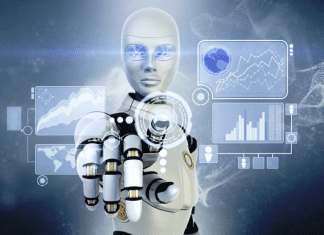As we reflect on the past year in robotics, it’s clear that there have been significant trends and developments. From the Amazon-iRobot deal to the rise of humanoids and generative AI, the industry has seen its fair share of excitement. Looking ahead, we can expect low- and no-code robotics, advancements in truck loading/unloading, and the continued growth of agtech, construction, and healthcare systems. Additionally, the discussion around killer robot legislation and the potential for nearshoring in manufacturing are topics to watch. Join us as we delve into the key takeaways and predictions for the future of robotics.
The Amazon-iRobot Deal: A Year of Anticipation
Explore the highly anticipated Amazon-iRobot deal and its impact on the consumer robotics industry. Delve into the regulatory scrutiny, layoffs, and ongoing negotiations that have marked this significant acquisition.
August marked a year since Amazon announced its plans to acquire iRobot in a $1.7 billion deal. This acquisition was expected to give Amazon a head start in the consumer robotics market, similar to how Kiva boosted its industrial ambitions.
However, the deal faced regulatory hurdles and scrutiny due to Amazon’s privacy concerns and noncompetitive practices. Despite being greenlit by some governmental bodies, the process has been drawn out, leaving a big question mark hanging over the deal’s closure.
Meanwhile, iRobot, the target of the acquisition, experienced two rounds of layoffs and had to lower its purchase price while raising debt to sustain its operations. The European Commission has set a Valentine’s Day 2024 deadline to reach a final decision on the deal.
The Rise of Humanoids: Uncanny Valley and Competition
Discover the fascination and concerns surrounding humanoids in the robotics industry. Explore the impact of human-like robots on the workforce and the influx of companies introducing their humanoid systems.
Humanoids have captured our attention due to their resemblance to humans and the uncanny valley effect. This phenomenon triggers a mix of fascination and unease, as we witness technology intentionally imitating human form.
Workers are understandably concerned about the potential replacement of their jobs by these human-like robots. The rise of companies like Figure, Apptronik, 1X, and Tesla showcasing their humanoid systems has further intensified these feelings.
While the debate on the effectiveness of human-like robots continues, real-world trials, such as Amazon’s Digit pilots, are shaping the future of this category. The outcomes of these trials will have a profound impact on the industry’s direction.
Generative AI: Revolutionizing Robotics and Design
Explore the growing role of generative AI in the robotics industry and its potential to transform the way robots think, learn, and listen. Gain insights into how generative AI is influencing robot design and its impact on the field.
Generative AI has become a significant topic in robotics, with top research institutes and companies incorporating it into their practices. This technology has the potential to revolutionize robot thinking, learning, and listening capabilities.
Experts believe that generative AI will not only enhance robot functionality but also have a profound impact on robot design. By harnessing the power of generative AI, robots can be designed with greater efficiency and innovation.
The discussions around generative AI in robotics signify a promising future, and we are on the verge of witnessing something significant in this field.
Robotics Funding: Fluctuations Amidst a Pandemic
Examine the fluctuations in robotics funding amidst the global pandemic. Gain insights into the initial surge, the subsequent dip, and the factors influencing investment in the robotics industry.
The robotics industry experienced a surge in funding in 2021 as employers sought automation solutions during the pandemic. However, 2022 saw a decline in funding, with 2020 being the worst year due to the initial impact of COVID-19.
Early numbers from last year indicated another dip in robotics funding. The initial interest in automation naturally regressed, and the cautious VC market further affected investments. As we approach the end of the year, funding is projected to be closer to the levels of 2020.
Despite the fluctuations, the robotics industry remains resilient, and the pandemic has highlighted the importance of automation in various sectors.
Key Trends and Predictions for Robotics in 2024
Explore the key trends and predictions for the robotics industry in the coming year. Dive into topics such as low- and no-code robotics, advancements in truck loading/unloading, the growth of agtech, construction, and healthcare systems, and more.
As we look ahead to 2024, several trends and predictions shape the future of robotics. Low- and no-code robotics platforms are expected to gain traction, making robotics more accessible to a wider audience.
The automation of truck loading and unloading processes is another area poised for significant advancements, offering solutions to the physical challenges faced in warehouses.
Furthermore, sectors like agtech, construction, and healthcare will continue to witness growth and innovation in robotics applications. The ongoing discussions around killer robot legislation and the potential for nearshoring in manufacturing are also worth monitoring.
Join us as we explore these key trends and predictions, providing insights into the exciting developments that lie ahead in the robotics industry.









